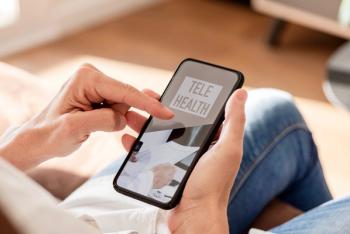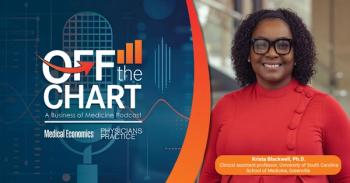
Nationwide study shows consumers ‘insecure’ in re-engaging with the U.S. healthcare system
How healthcare providers can rebound after the pandemic
While healthcare providers, telehealth companies and insurers all try to discern their path forward in a post-pandemic landscape, a newly released study shows significant levels of consumer insecurity. Concerns have been idenitifed for both in-person and remote care. Findings also draw a roadmap for healthcare providers looking to regain consumer trust and optimize capacity levels.
Prior to the COVID-19 pandemic, patients expressed extreme frustration with in-office appointment scheduling, wait times, and cost transparency. Addressing patient experience dissatisfaction with these items post-pandemic will continue to be critical to mitigate loss of patient visits, procedures and revenue. Successful providers will accelerate the redesign of the patient experience – for both in-person and remote visits – to deliver offerings that support convenience for the patient.
The nationwide study, published by market research firm The Martec Group and the healthcare marketing division of The Motion Agency, documents that over half of consumers now have experienced a remote visit with a healthcare provider, up from 31 percent in February 2020. Among those who haven’t engaged in a virtual visit yet, a third say they’re highly likely to consider one.
The study found that the largest percentage of both groups–46%of telehealth users and 53% of those who have not used telehealth yet–are neutral about future engagement. They’re intrigued, but they need to be won over still. The apparent tradeoffs with remote versus in-person healthcare have yet to move the needle toward positive sentiment. Forty percent of respondents indicate missing the structure of in-person visits with physicians, while the lure of no wait times and easily getting appointments is welcome.
In the end, to succeed in getting more patients to return and continue utilizing healthcare services, providers need to customize their outreach to individual consumer segments, meeting patients at their preferred form, or forms, of reengagement. The study identified four unique consumer segments with significantly varying viewpoints on reengaging with healthcare systems:
The Apprehensive Reengager
Primarily married, these 35- to 54-year-old suburbanites represent the lowest incidence of telehealth experience among the identified consumer segments, both prior to and during COVID-19, and the highest level of concern about being in a hospital or doctor’s office. They simultaneously express concern about the accuracy of telemedicine and skepticism about healthcare facilities’ sanitization and PPE protocols. They have comparable levels of anxiety with both remote and in-person visits. Reporting the biggest drop in mental and emotional health of any segment, a high percentage of “apprehensive reengagers” live in states with major COVID-19 restrictions. They are college educated with annual incomes ranging from $50,000 to $150,000.
The Concerned Reengager
The oldest (55+) group among the segments, these individuals predominately live in rural or suburban areas with low COVID-19 restrictions. They reported a low incidence of remote visit experience, both prior to and during COVID-19, and although expressing a high level of concern about being in a hospital or doctor’s office, they showed slightly more concern surrounding telehealth than in-person visits. Specifically, they view in-person doctor visits as more productive than remote visits and expressed anxiety about telehealth technology. “Concerned reengagers” have the lowest annual income (under $50,000) and education levels (high school or trade school) among the segments. They reported little change in overall mental or emotional health during the pandemic.
The Remote Reengager
These young (18 to 34) largely-singles live in primarily urban and suburban areas with low COVID-19 restrictions. They indicated high adoption of telehealth services, both prior to and during the pandemic. While categorizing their concern about being in a hospital or physician’s office as low, they showed a significant difference between concern for in-person visits and confidence in telehealth. “Remote reengagers” view virtual healthcare as a safer option than an in-person appointment, at least until a working vaccine is widely available. They also like the freedom and control that a remote visit offers. They reported little change in their mental or emotional health during COVID-19. Their annual income ranges between $50,000 to $75,000, and they have a bachelor’s degree or high school education.
The Confident Reengager
These primarily urban 35- to 54-year-olds live in states with major COVID-19 restrictions and are confident in engaging with the healthcare system in-person and, even more so, remotely. Among all segments, they represent the highest incidence of telehealth experience, both before and during COVID-19, and the lowest level of concern about being in a hospital or doctor’s office. They also carry the lowest overall drop in mental and emotional health during the pandemic. Mostly married, “confident reengagers” enjoy the personal nature of in-person visits with their physicians while appreciating the convenience of telehealth. This group was the most highly educated and reported the highest annual income ($75,000+).
Providers should establish more frequent touchpoints with patients, as they work through their insecurities about reengaging with healthcare systems. Addressing safety concerns about using emergency rooms and urgent care is particularly crucial, as study findings show consumers are especially reluctant to visit these facilities for fear of exposure to the virus.
As for remote healthcare, the rapid adoption of telehealth during the early stages of COVID-19 afforded no time to better educate consumers about how to use virtual care. Virtual health companies need to take a step back and support the customer journey. Identify use cases for when virtual visits can provide a strong option over in-person visits. Companies also need to address consumers’ concerns about the privacy and security of their personal information.
To build resilence, regain consumer trust, and optimize capacity levels, healthcare providers need to understand their community’s unique consumer segments and address each group accordingly.
References
This study was conducted using The Martec Emotion Score (MES), which is calculated by plotting conscious and nonconscious emotions on a spectrum of unpleasant to pleasant, adjusted for relative intensity of feelings or passion level. The MES equates to a number between -100 (totally unpleasant) and +100 (totally pleasant). An MES near 0 indicates a significant presence of both pleasant and unpleasant emotions.
About the Author
Chuck Bean leads marketing and business development efforts for The Martec Group. He leads Martec's Emotion Intelligence practice, which focuses on uncovering the emotions customers (and employees) have regarding topics such as brands, experiences, new products/concepts and specific features/benefits.
Newsletter
Optimize your practice with the Physicians Practice newsletter, offering management pearls, leadership tips, and business strategies tailored for practice administrators and physicians of any specialty.








